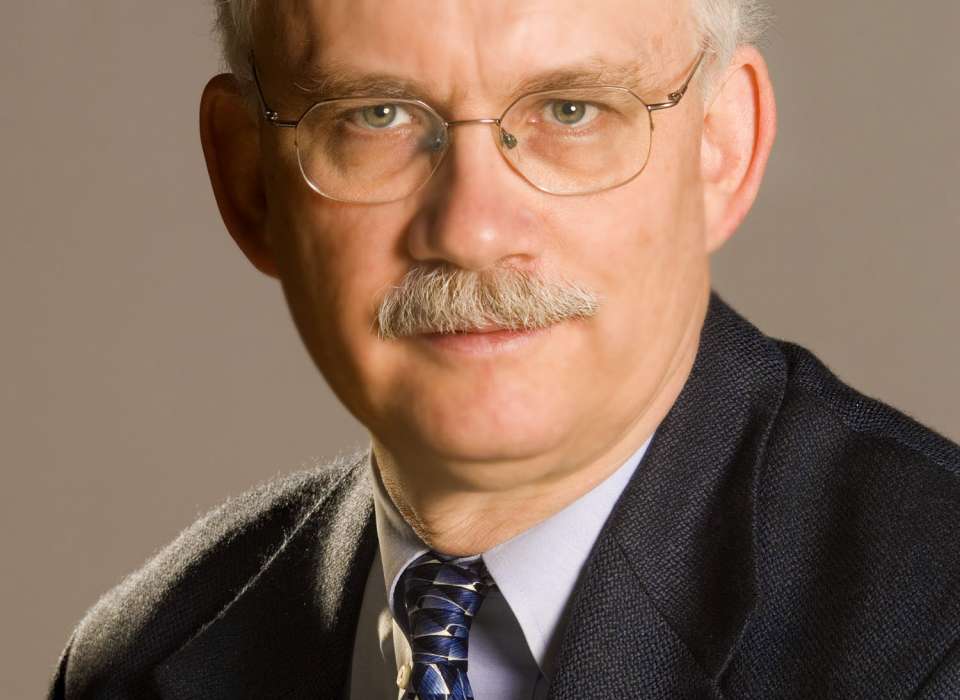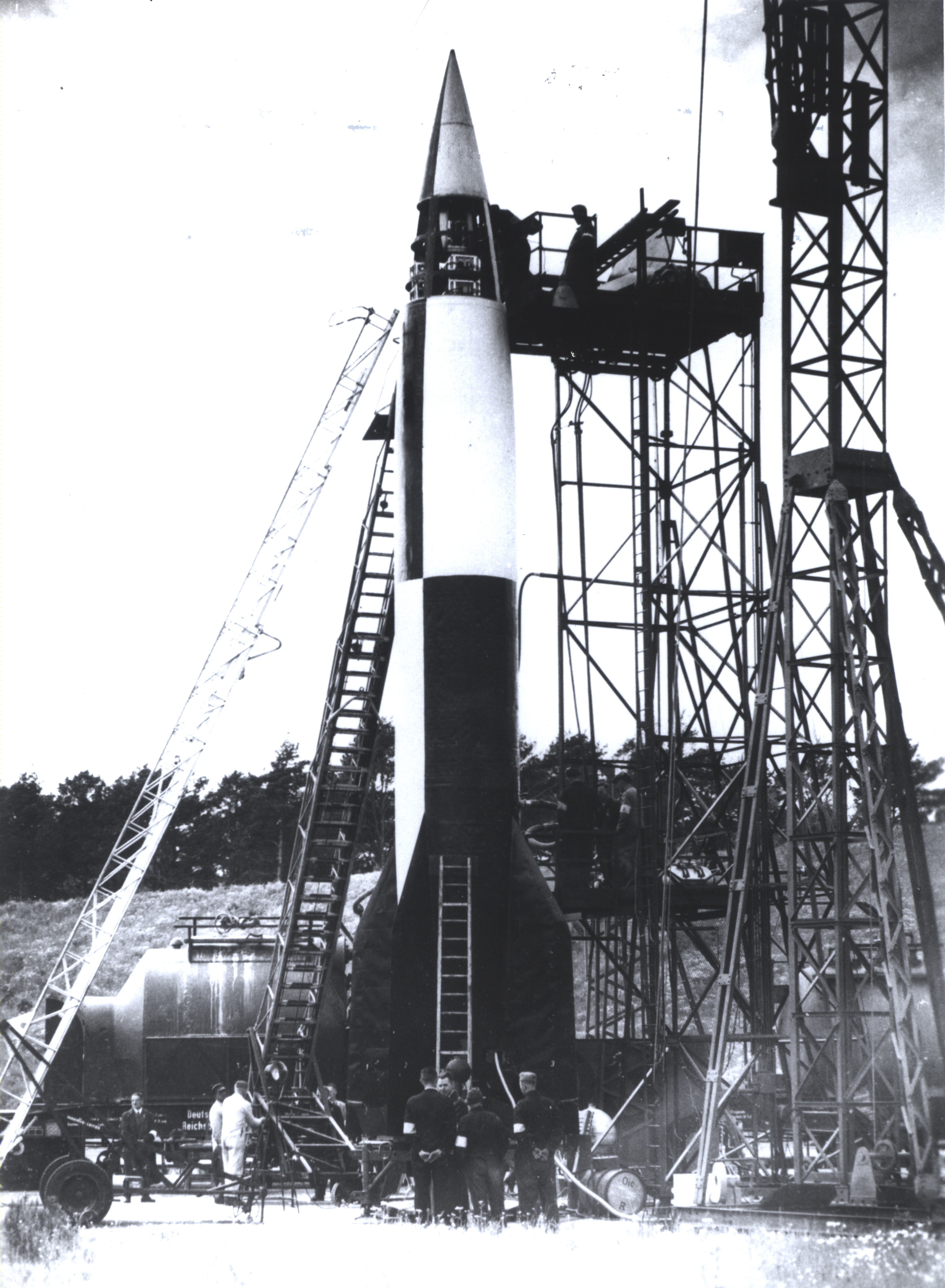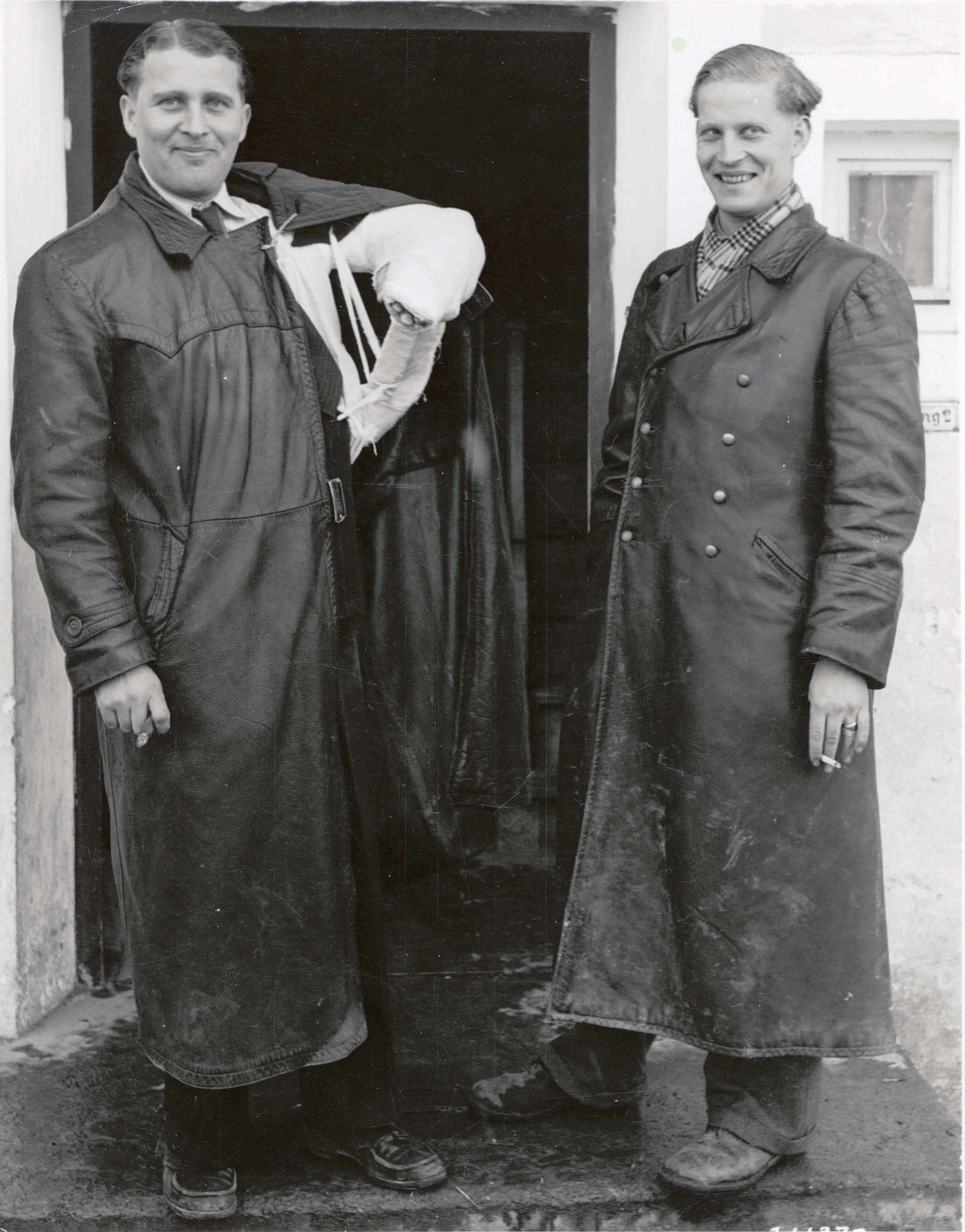TOP IMAGE: Dr. Michael Neufeld, National Air and Space Museum. Credit: National Air and Space Museum.
To mark the 75th anniversary of the start of the Nazi regime’s V-2 (Vergeltungswaffe or Vengeance Weapon) rocket offensive on September 8, 1944, I reached out on behalf of the Museum’s Institute for the Study of War and Democracy to Michael Neufeld, PhD, the leading authority on Wernher von Braun and the Third Reich’s rocket program.
Dr. Neufeld is Senior Curator in the Space History Department of the National Air and Space Museum, where he is responsible for rocket collections and for Mercury and Gemini spacecraft. He has written or edited nine books, notably The Rocket and the Reich: Peenemünde and the Coming of the Ballistic Missile Era (1995); Von Braun: Dreamer of Space, Engineer of War (2007); and Spaceflight: A Concise History (2018).
In 2017, Secretary of the Smithsonian Institution David Skorton gave him the Smithsonian Distinguished Scholar Award, the highest research award of the Institution. Dr. Neufeld generously shared his thoughts on the significance of the V-2, Wernher von Braun, and the Nazis’ reliance on forced labor to build rockets.
My interview with him was conducted via email in August 2019.
Q: What kind of impact did the A-4/V-2 rocket have on World War II during its final months?
A: Contrary to many assertions that if the Germans had the V-2 earlier, it would have changed the course of the war, its impact was minor. It was frightening if you were in the target areas—primarily London and Antwerp—but elsewhere it was barely a distraction to the final campaign against Nazi Germany. The Allies could not shoot the supersonic missile down or find its mobile launch crews, and the underground production plant in Germany was hard to bomb, so they did not divert a lot of forces. In fact, the V-2 was an extraordinarily expensive way to drop a one-ton bomb on an enemy city. It killed about 5,000 Allied civilians and soldiers between September 1944 and March 1945, whereas the Allies learned how to cause several times that many deaths in a single night of bombing. The Germans would have been better off investing in conventional aircraft. The V-2 was a revolutionary breakthrough in rocketry, but it came too early—not too late—to be an effective weapon. It took nuclear warheads, bigger rocket engines, and much better guidance systems to turn the ballistic missile into a global threat during the Cold War.
Q: How did Wernher von Braun, the scientist most associated with the V-2, become involved with the Third Reich's rocket program? How would you characterize his relationship with the Nazi regime and its worldview?
A: Von Braun was involved with an amateur rocket club in Berlin while he was an engineering student between 1930 and 1932. The German Army, then still a small force greatly hampered by the Versailles Treaty, took an interest in exotic technologies like the liquid-propellant rocket as potential future weapons. (The fact that the rocket went unmentioned in the treaty was unimportant, however, contrary to entrenched mythology.) Army officers arranged in late 1932 to transfer von Braun to the main university in Berlin to do a secret physics dissertation on liquid-propellant rocketry. Just after he began work, Hitler came to power. Wernher von Braun, who actually was a Prussian baron, was raised in a traditional, aristocratic, conservative-nationalist household and was not automatically sympathetic to the plebeian, radical-right National Socialists. But as Hitler reasserted German national power and threw money at rearmament, benefiting the Army rocket program, von Braun came to be increasingly sympathetic to the regime. He was a member of an SS riding group while a university student in 1933–34, joined the Nazi party in 1937, and became a junior SS officer in 1940. But in every case it appears to be because of external pressure. There isn’t much evidence that he joined voluntarily or shared the racist, anti-Semitic ideology of the party, but he ascended rapidly in the Third Reich and became quite loyal to Hitler’s government.
Q: How does von Braun's case compare with that of other German scientists, such as the physicist Werner Heisenberg?
A: Heisenberg never joined the party, but he was in scientific positions where it was easier to evade that, if one wanted to. Von Braun’s involvement in secret weapons development made it harder to avoid, notably in the case of becoming an SS officer in 1940. Indirect pressure from Reichsführer-SS Heinrich Himmler to join came at a time when the Army rocket program was having priority problems with Hitler, so von Braun’s Army superior, Colonel Walter Dornberger, told him it would be better if he did not make waves by saying no. The other key difference between von Braun and Heisenberg was that the nuclear weapons program never, thankfully, came remotely close to building a bomb. When the V-2 was pushed prematurely into production in 1943, the Eastern Front had drained skilled German workers from the factories and the Nazi war economy became increasingly dependent on forced and slave labor. The rocket program leadership, in conjunction with Albert Speer’s Armaments Ministry, made the decision to employ SS concentration camp prisoners in V-2 production. After Allied air raids, Hitler and Himmler sent missile assembly to underground tunnels near the north-central German city of Nordhausen in August 1943, which put von Braun into the position of being directly part of a system murderously exploiting camp prisoners.
Q: What was the role of Heinrich Himmler's SS in the rocket program?
A: After the first successful V-2 flight in October 1942, Hitler approved production, which caused Himmler to take a greater interest. But the SS only became important because of the decision to use its concentration camp prisoners in rocket production. The underground Mittelwerk (Central Works) plant brought growing SS influence, as did the employment of slave labor in many other factories and facilities of the rocket program. In March 1944, Wernher von Braun, his brother, and two key associates were suddenly arrested by the SS-controlled Gestapo, apparently for drunken remarks made at a party that Germany was likely to lose the war and the “main task” was to build a “spaceship.” They were only rescued by the intervention of Dornberger and Speer. Himmler never trusted von Braun again, but the latter was protected by the Army and the Armaments Ministry. After the failed assassination attempt against Hitler on July 20, 1944, the Army lost even more power. Himmler installed his man, SS General Hans Kammler, as the overlord of the V-2 program. Von Braun and Dornberger had to deal with the dangerous Kammler for the rest of the war.
Q: You were involved in getting Yves Béon’s Planet Dora: A Memoir of the Holocaust and the Birth of the Space Age published in 1997. What do you think Americans should know about Béon’s story?
A: Yves, who I knew well, was a teenage member of the French Resistance when the Gestapo sent him to the Buchenwald concentration camp in 1943 near Weimar, Germany. He then was transferred to a sub-camp called Dora. It was first located in the Mittelwerk’s horribly cold, dusty, and unsanitary underground tunnels, then in aboveground barracks next to the tunnels. Yves’s vividly told story was just one of tens of thousands that could have been narrated by prisoners in Dora, who were drawn from Soviet and Polish soldiers and civilians, French and Belgian resistance fighters, German criminals and Communists, Sinti and Roma (“Gypsies”) and several other groups. None were Jewish in the early months (unless they hid their identity), although a smaller group of Hungarian Jews were transferred to the camp in mid-1944 and many dying Jewish prisoners were shipped there from the east in early 1945. As Dora expanded into the Mittelbau (Central Construction) camp system in 1944–45, up to 25,000 prisoners died, roughly 30 percent of those who passed through it. At least 10,000 of those deaths can be attributed to the V-2 program—twice the number of those killed on the receiving end! The one thing Americans need to remember is that Wernher von Braun and several of his key associates who ended up launching the first US satellite and astronaut and designing the Saturn V that sent Apollo astronauts to the Moon, had this Nazi past and were connected to these crimes. To what extent we can hold them responsible for those crimes is debatable, but we simply cannot remember them only as space heroes.
Q: Project Paperclip, the secret American seizure of German scientists after the Third Reich’s collapse, has been the subject of endless controversy. How do you assess the choices American authorities made in bringing these men to the United States?
A: Paperclip is the best-known cover name for the originally secret program to import German and Austrian scientists, engineers, and technicians into the United States after World War II. In all, at least 1,000 came by the 1960s. Only about 20 percent were part of von Braun’s American group, although it got all the publicity. For the most part, Paperclip was a very successful program that brought much valuable technical expertise to the United States during the Cold War struggle with the Soviet Union, benefitting both defense and space programs. Thus I do not think Paperclip can be one-sidedly denounced as wrong. But a few scandals were covered up, notably that von Braun and associates were implicated in the Mittelwerk/Dora story, and also that a couple of Air Force aerospace medicine specialists were indirectly connected to gruesome experiments on concentration camp prisoners. The growing anti-Communist paranoia of the early Cold War allowed the Defense Department to sweep their Nazi records under the rug, where that data largely stayed until the 1980s when the Justice Department finally began looking into their past.
Q: What is the legacy of Nazi Germany’s rocket-engineering program for the world after 1945?
A: The V-2 was a failure as a weapon but was a revolutionary breakthrough in rocket and missile technology that accelerated the coming of the intercontinental ballistic missile (ICBM) and the space launch vehicle by as much as a decade. That was true not only in the United States. The Soviets and French, notably, also imported German rocket engineers and used V-2 technology as a starting point for their development—although both the Soviet Union and the United States had rocket and missile groups that predated the coming of the Germans. The rocket is Janus-faced, looking toward global nuclear annihilation and the peaceful exploration of space. The V-2, in its origins and in its legacy, fully embodied that dual-sided reality.
Jason Dawsey, PhD
Jason Dawsey, PhD, is ASU WWII Studies Consultant in the Jenny Craig Institute for the Study of War and Democracy.
Cite this article:
MLA Citation:
APA Citation:
Chicago Style Citation:







![Max Fuchs, New York City cantor, sings as Rabbi Sydney [sic] Lefkowitz, Richmond, VA, conducts the first Jewish services from Germany.](/sites/default/files/styles/max_650x650/public/2025-10/image1.jpg)



